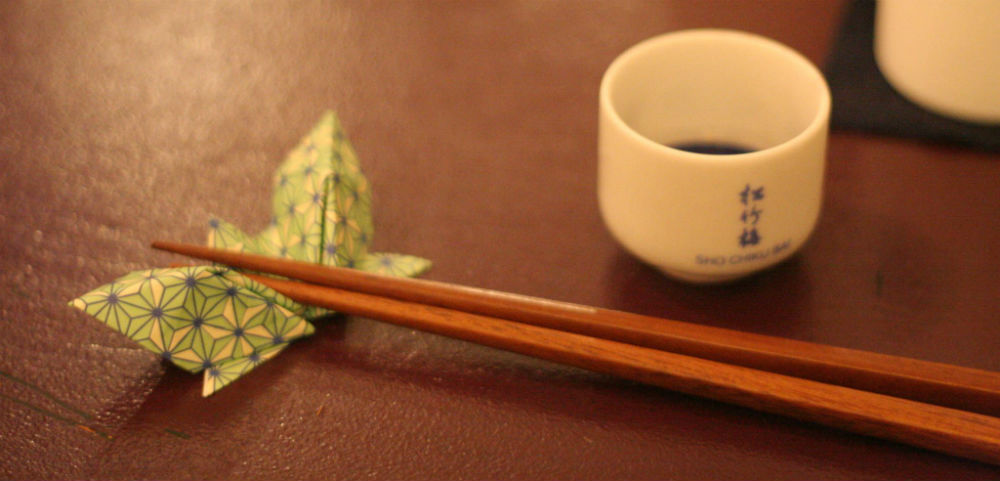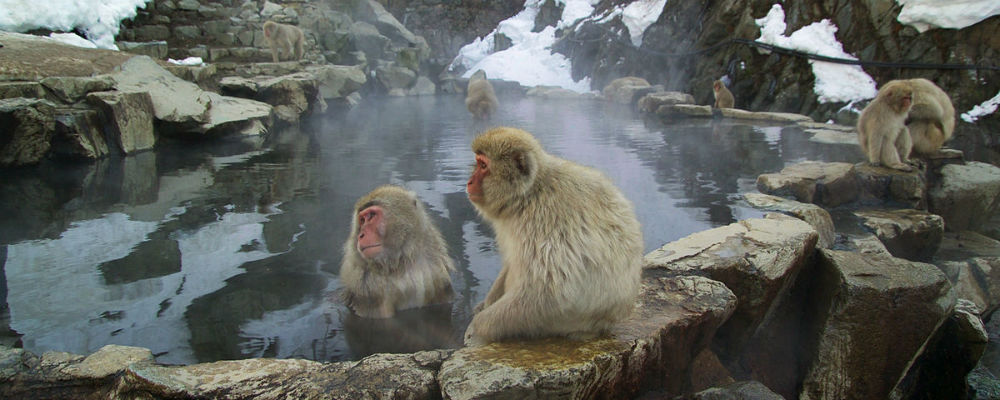Japanese Etiquette
Eating
Most restaurants provide a hot towel for cleaning your hands before eating - very civilized! Before eating, it is customary to say 'Itadaki-masu'. There isn't really an equivalent in English (except maybe 'Bon appetit'?!). It depends on the food, of course, but hashi (chopsticks) are the most widely used implememts for eating.

Chopsticks should not be put directly on the table
It's not impolite to ask for a knife and fork or spoon if you have trouble with chopsticks. Some restaurants may not have them but those serving Western food always do.
Chopsticks should not be used for anything other than putting food in your mouth. They certainly shouldn't be used for pointing to someone or moving dishes around the table. You should never pass anything from one pair of chopsticks to another, or stick them into a bowl of rice - these are done only as part of the funeral ritual!
There will sometimes be a hashi-oki, or small object to rest the chopsticks on. When eating noodles, such as soba or ramen, it is okay to slurp loudly. In fact, they say it improves the flavor! After a meal, it is polite to say 'Gochiso-sama deshita'.
Drinking
The Japanese are a quiet and reserved people, except when they're drunk - and most of them get drunk pretty easily. Going drinking with fellow students or coworkers is almost a ritual in Japan. It is considered the best way to break down barriers and cement relationships and behaviour can get pretty rowdy. But all is forgiven and forgotten the next day.
It is polite to pour other people's drinks and then hold your own glass while your host or friend fills it. having other people constantly filling your glass can lead to a lot of alcohol disappearing very quickly! The Japanese toast is 'Kampai' (literally 'dry glass'). If you are invited out, it is common for your host to pay the bill, but of course this should be played by ear.

Japanese macaques bathing in an onsen
Bathing
Japan has a long history of communal bathing and a visit to one of its thousands of onsen (hot springs) can be a highlight of any trip. As in the bathroom in a private home, you wash yourself outside the bath before getting into the hot water to soak. It is not uncommon for people to scrub each other's backs.
Sento (public bath houses) are quite common as there are still some cheap apartments without their own bathrooms. They cost around 300 yen per visit. You should bring your own toiletries and put your shoes and clothes in the lockers provided. Sento and onsen are almost always separated by sex these days but mixed bathing can still be found in a few places.
General
Japanese people don't usually use handkerchiefs for blowing their nose. It's very common to see packs of tissues being given out on the street. They're free because they contain advertisements. Eating on the street is considered impolite but has become more common. Spitting and urinating in public (mainly by middle-aged or drunk men) don't seem to raise too many eyebrows.

